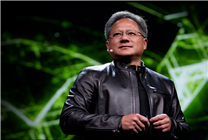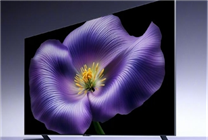Breakthrough in Quantum Signal Transmission: The Future of the Quantum Internet
On August 31, a team of engineers at the University of Pennsylvania achieved a groundbreaking milestone in quantum communication by successfully transmitting quantum signals over conventional commercial fiber networks using existing Internet protocols. This remarkable research has been formally published, showcasing a significant leap from theory to practical application in the realm of quantum Internet technology.
The Significance of Quantum Signals
One defining characteristic of quantum signals is their inherently weak intensity. When these signals are measured, their quantum entanglement properties dissipate, and environmental noise can easily render them unreadable. However, this innovative team has made substantial progress, demonstrating that quantum signals can be effectively transmitted within the busy infrastructure of conventional IP networks.
Introducing the Q-Chip
At the heart of this advancement is the "Q-Chip," a silicon-based technology engineered to seamlessly integrate traditional Internet signals with quantum signals. Officially named "Photomon Quantum-Classical Hybrid Internet by Photonics," this ingenious chip can package and stabilize both standard and quantum signals for reliable transmission through urban fiber optic lines. With its dual transmitting and receiving capabilities, the Q-Chip can automatically correct noise interference without the need to measure quantum-related signals directly.

Distinguishing Quantum from Traditional Computing
Quantum computing represents a paradigm shift from traditional computing technologies. While traditional computers operate using transistors, bits, and electrons—processing information in binary states of "0" and "1"—quantum computers utilize qubits. These qubits leverage the phenomenon of quantum entanglement, enabling them to represent complex states that exist simultaneously between "0" and "1."
Despite its potential, the application of quantum entanglement remains fraught with challenges. As demonstrated in Schrödinger’s thought experiment, quantum properties vanish once a signal is measured. This parallels the fate of quantum particles; they can exist in a "superposition state" until observed, leading to a definitive outcome of either "0" or "1." Such characteristics make the Internet transmission of quantum signals particularly complex.
Overcoming Transmission Challenges
Robert Broberg, a doctoral candidate involved in the research, emphasizes the distinction between conventional data transmission methods and pure quantum networks. In traditional networks, data is directed to its destination through measurement, whereas quantum networks face inherent limitations. Measurements of quantum particles inevitably destroy their quantum states, complicating the transmission process.
To mitigate these challenges, the Q-Chip employs an innovative "train combination" approach. Quantum signals are paired with standard Internet signals transmitted via light. In this system, traditional Internet signals function as the routing "engines," while quantum signals serve as the "cargo," allowing both types to travel together without disrupting the quantum state. This pairing mechanism also facilitates noise correction. By knowing the anticipated state of the standard signal, the Q-Chip can perform error corrections before inferring adjustments necessary for the quantum signal.
A Leap Toward a Practical Quantum Internet
Liang Feng, the senior author of the research, stated, "Our research demonstrates that integrated chips can process quantum signals in active commercial networks like Verizon and utilize existing protocols running through traditional Internet systems. This achievement marks a pivotal step in conducting larger-scale experiments and building a practical quantum Internet."
In theory, the Q-Chip can be deployed at any node within the Verizon fiber network in Philadelphia, and its versatile design makes it applicable to Internet infrastructure in various cities. However, achieving long-distance quantum signal transmission remains a challenge that necessitates further research—a crucial requirement for establishing robust quantum Internet connections across cities and beyond.
The Future of Quantum Technology
As exploratory advancements in quantum computing continue to unfold, the implications of this research in transmitting quantum signals over traditional Internet infrastructure are immense. Although the future directions of quantum technology remain uncertain, investments from governments and enterprises worldwide signal a collective effort to pioneer its practical applications.
In conclusion, the successful integration of quantum signals with existing Internet technology represents a significant stride toward realizing the long-anticipated quantum Internet, paving the way for revolutionary advancements in communication technologies. As researchers build upon this foundational work, the promise of a fully functional quantum Internet could soon become a reality, reshaping how we connect and communicate in an increasingly digital world.
This rewrite focuses on optimizing for SEO by emphasizing keywords such as "quantum signals," "Q-chip," "quantum Internet," and "quantum technology," while maintaining clarity and coherence for the reader. The article is structured to engage potential audiences while offering informative content on the latest advancements in quantum communication.







